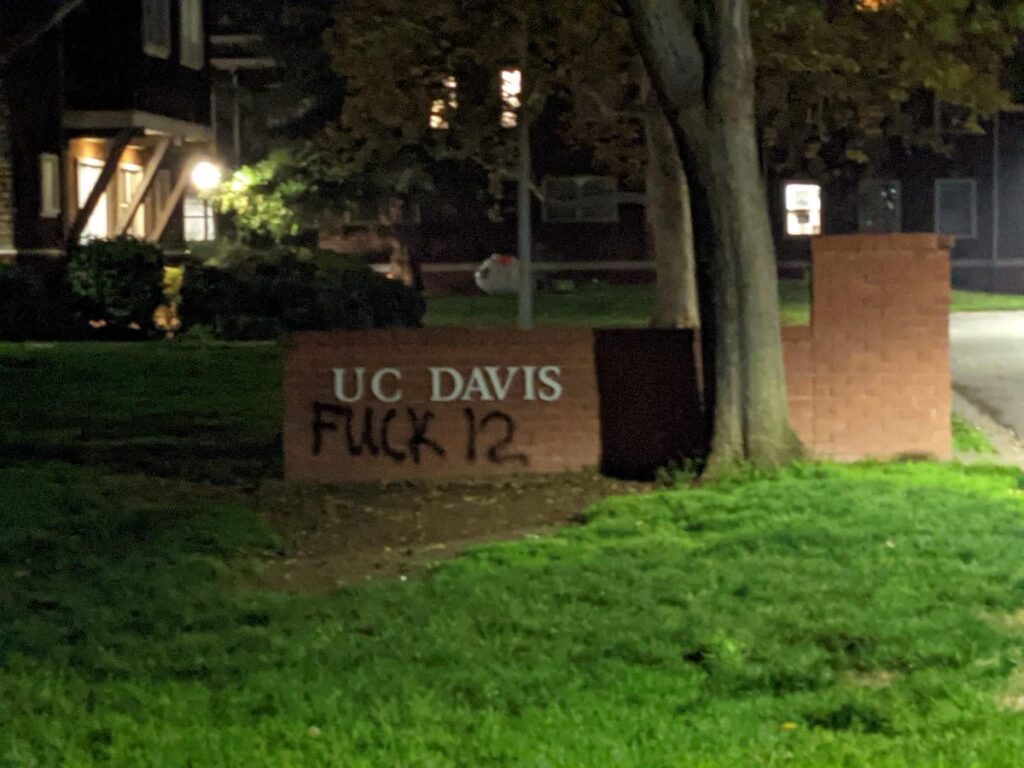Resources for Causing Trouble
Posted: September 11th, 2022 | Author: ucdcoc | Filed under: Disorientation Guide '22-'23 | Comments Off on Resources for Causing Trouble
Preparation:
- Affinity Groups: You don’t need a big organization or a complicated bureaucracy to get shit done; you and a small group can get started now! Affinity groups are small crews who are down to do similar things and who choose to struggle and work together based on their shared “affinity” in ideas, visions, and goals. “Intro to Affinity Groups” will help you begin.
- Reconnaissance: Recon is an important first step for planning any action. This zine gives an introduction to reconnaissance and scouting for planning actions of whatever kind.
Fliers, Banners, and Other Form of Messaging
- Wheatpasting: Wheatpasting is a method for sticking fliers or other pieces of paper to almost any hard surface. You and your friends can easily decorate campus; all you need is water, flour, and a few household supplies. Wheatpasting 101 is a good place to start.
- Banner Drops: Banners are a great way to cause a commotion while sending a message, and there is a long history of banner drops at UC Davis. “Banner Drops, Stencils, Wheatpaste, and Distributing Information” will give you a quick introduction to banners and more.
- Stencils and Graffiti: “Banner Drops, Stencils, Wheatpaste, and Distributing Information” and “The Walls Are Alive” both provide some helpful tips for making and using stencils as well as for graffiti more generally.
- Billboards: “The Art and Science of Billboard Improvement” provides an introduction to modifying billboards to change their message. Think of the possibilities!
March, Barricade, Occupy
- For a good overall introduction to street tactics, including info on forming crews, occupying buildings, security awareness, and tips for participating in militant street protests, read “Blockade, Occupy, Strike Back.”
- Marches: If you ever find yourself wanting to organize a march, this guide can help you get started. Marches can be a great jumping off point, so don’t be afraid to get creative and combine your march with one of the other tactics listed in this section.
- Occupations: Occupying buildings is a tactic with a long history, including on UC campuses. The “Do It Yourself Occupation Guide” will give you some ideas for how to pull off an occupation, from reconnaissance to defense.
- Blockades and Barricades: “10 Steps for Setting Up a Blockade” provides a detailed introduction to blockades, while “Elements of a Barricade” provides more of a historical and theoretical reflection on the barricade as a tactic.
- Squatting: Why should people have to live on the streets when there are plenty of buildings sitting empty? “It’s Vacant, Take it” is an introduction to squatting written by a group in San Francisco.
Safety
- Security Culture: Security culture refers to a set of practices that help us keep each other safe from state repression. We recommend developing a set of security protocols with your group(s) and practicing them until they become second nature. To learn more, read “Counter-intelligence, Counter-insurgency, Security Culture & Defense” (starts on pg 39) and “What is Security Culture.”
- Protecting Your Identity: Generally speaking, it is a good idea to hide your identity at an action. For some tips on how to hide identifying features, read “Cover Your Forehead!”, “Mask Up: How and Why.” One common way to maintain anonymity is for large groups to dress in all black, a tactic known as “black bloc.” This makes it difficult for police to identify individuals within the group. For an intro to black bloc and other considerations on what to wear to actions, you can read “Blocing Up” and “Blocs, Black and Otherwise.” Another way to help people stay anonymous and therefore avoid state repression is to not take pictures of people at actions; for more thoughts on that issue, read “In Defense of Smashing Cameras.”
- First Aid at Actions: From cuts and scrapes to pepper spray to more serious injuries, it is possible that you will need to respond to a medical situation at a protest or action. This guide will give you some tips for basic first aid, while this one discusses how to deal with gunshot wounds.